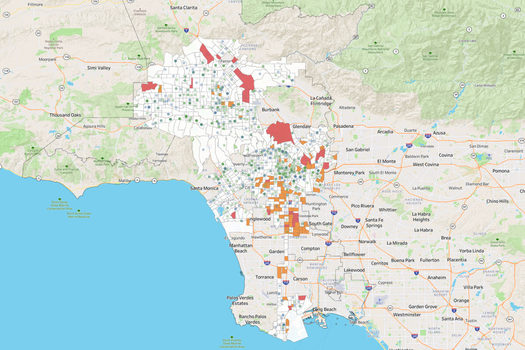There are eight Democratic-held U.S. House districts up for election in 2024 that Republican candidate Donald Trump won in the 2020 presidential election. As of June 2024, Ballotpedia has identified all eight districts as 2024 U.S. House battlegrounds. Trump’s margin of victory in the eight districts ranged from 2.9 percentage points to 17.2 percentage points.

Representation changes each election
Five incumbents in Democratic-held districts that Trump won in 2020 are seeking reelection in 2024. Three incumbents are retiring from public office.
In 2022, there were 13 Democratic-held U.S. House districts up for election that Trump won in 2020. Incumbents did not seek reelection in eight of the 13 districts. Ten of the Democratic-held districts flipped and elected a Republican in 2022.
Click here to see the 19 U.S. House districts represented by a Republican in 2022 and won by Democratic candidate Joe Biden in 2020.

Split congressional districts historically
From 1900 to 2020, the percentage of congressional districts that voted for a presidential candidate of one party and a U.S. representative from a different party ranged from 1.6% (five districts) in 1904 to 44.1% (192 districts) in 1972. The number of districts available changes year-by-year. The 2020 election had the sixth fewest split districts since 1904 with 6.2% (27 total).
Written by Briana Ryan.
This story was produced by Ballotpedia and reviewed and distributed by Stacker Media. The article was retitled and copy edited from its original version.
Re-published with CC BY-NC 4.0 License.







